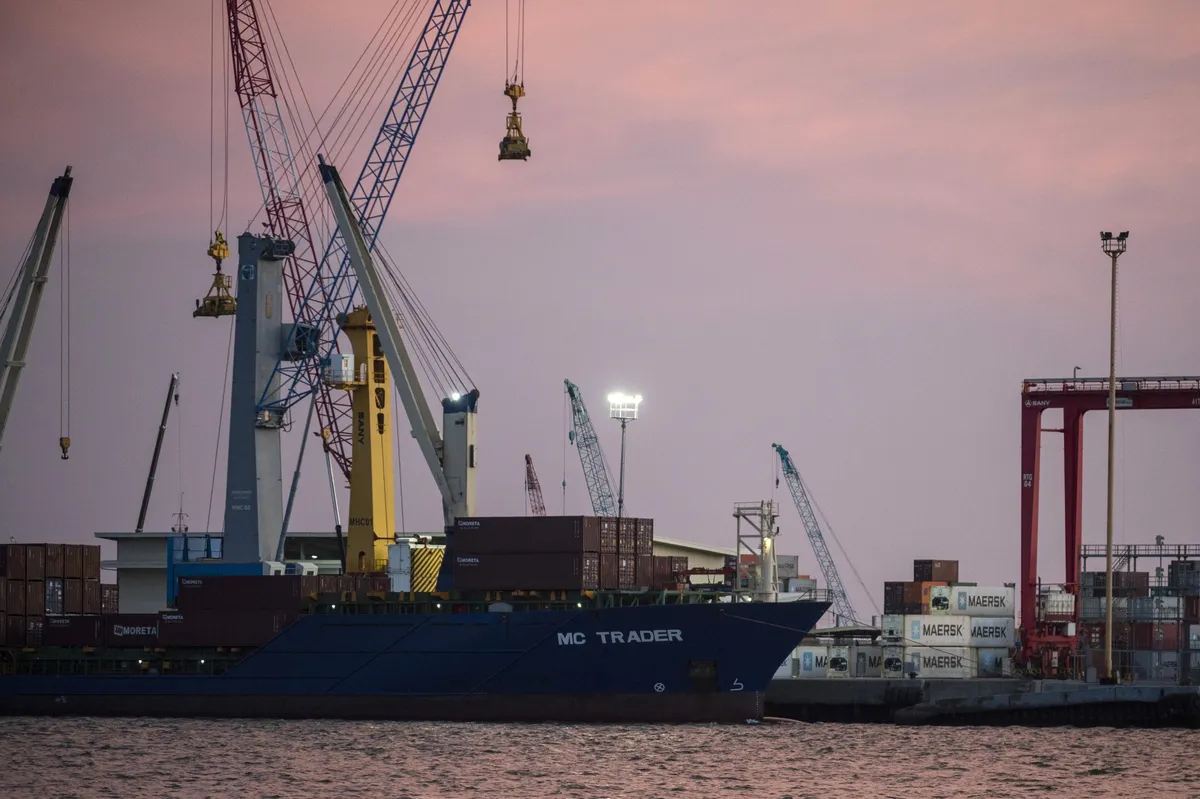Takeaways
- Trump unveiled a new round of tariff demand letters with levies set to hit in August on imported goods from partners who fail to reach agreements with the US.
- Trump said he would levy different rates on various countries, including a 30% rate on Algeria, Libya, Iraq and Sri Lanka, and a 20% rate on goods from the Philippines.
- Trump stated that the tariff rates are "based on common sense, based on deficits, based on how we've been over the years, and based on raw numbers" and that "they're based on very, very substantial facts, and also past history".
US President Donald Trump unveiled a new round of tariff demand letters on Wednesday with levies set to hit in August on imported goods from partners who fail to reach agreements with the US.
Trump said he would levy a 30% rate on Algeria, Libya, Iraq and Sri Lanka, with 25% duties on products from Brunei and Moldova and a 20% rate on goods from the Philippines. The levies were largely in line with rates Trump had initially announced in April, though Iraq’s duties are down from 39% and Sri Lanka’s reduced from 44%.
Trump began notifying trading partners of new rates on Monday ahead of a deadline this week for countries to wrap up negotiations with his administration — and posted to social media that he planned to release “a minimum of 7” letters on Wednesday morning, with additional rates to be posted in the afternoon.
Out of the seven countries mentioned in Trump’s announcements so far on Wednesday, only the Philippines — which sent some $14.1 billion of goods to the US last year — ranks among America’s top 50 trade partners. Products it typically sells on US markets include electronics, auto parts and textiles.
Imports from the other six nations put together amounted to less than $15 billion last year, with Iraq — an exporter of crude oil — accounting for about half of that sum.
Trump at a White House event on Wednesday said more tariff letters would be coming, including one for Brazil “later on this afternoon or tomorrow morning.”
“Brazil, as an example, has been not good to us. Not good at all,” he added.
Asked what formula he was using to determine the appropriate duty rate for trading partners, Trump told reporters it was “based on common sense, based on deficits, based on how we’ve been over the years, and based on raw numbers.”
“They’re based on very, very substantial facts, and also past history,” he said.
So far, the latest warnings have done little to rattle markets, with traders focusing on Trump’s overall extension of the deadline for the so-called reciprocal tariffs to Aug. 1. That’s effectively given trading partners an extension for talks and initially fueled skepticism on Wall Street that he would follow through on his import taxes.
Trump added to that uncertainty earlier this week by claiming he was “not 100% firm” on that new cut-off date for talks. He has since sought to signal to investors and trading partners that he is committed to carrying out his tariff threats, vowing Tuesday that “all money will be due and payable starting AUGUST 1, 2025 — No extensions will be granted” on country-specific levies.

The president also raised the stakes for two key trading partners, saying the European Union could receive a unilateral tariff rate soon despite progress in negotiations, and vowing to hit India with an additional 10% levy for its participation in the BRICS bloc of developing nations, which Trump says is threatening the US dollar’s status as the world’s key currency.
And he raised the specter of more industry-specific tariffs, floating a 50% rate on copper products that sent that metal climbing as high as 17% in New York on Tuesday, a record one-day spike. He also pitched tariffs as high as 200% on pharmaceutical imports if drug companies don’t shift production to the US in the next year.
Read More: Trump Vows No Tariff Extension, Hardens Threats on Copper, Drugs
The barrage of letters and fresh tariff threats marked the latest turn in a dizzying trade agenda that has spurred volatility in markets and left consumers, businesses and trading partners anxious about the impact on trade flows and the global economy.
Trump initially announced the so-called reciprocal tariffs on April 2, but after markets reacted with alarm, paused the higher duties to 10% for a 90-day negotiating period that was set to end on Wednesday, July 9 before the latest three-week extension.
Trump’s letters on Monday targeted countries including Japan, South Korea, South Africa, Indonesia, Thailand and Cambodia. Most of the tariff rates, however, were largely in line with what Trump had already announced the nations were likely to face.
Earlier: Where Does President Trump’s Tariff Campaign Stand?: QuickTake
While Trump has touted his tariff notification letters as deals, even the actual agreements he has managed to strike during the negotiating period with the UK and Vietnam have been far short of comprehensive, leaving many details unclear. Trump also secured a truce with China to lower rates and ease the flow of critical earth minerals.
